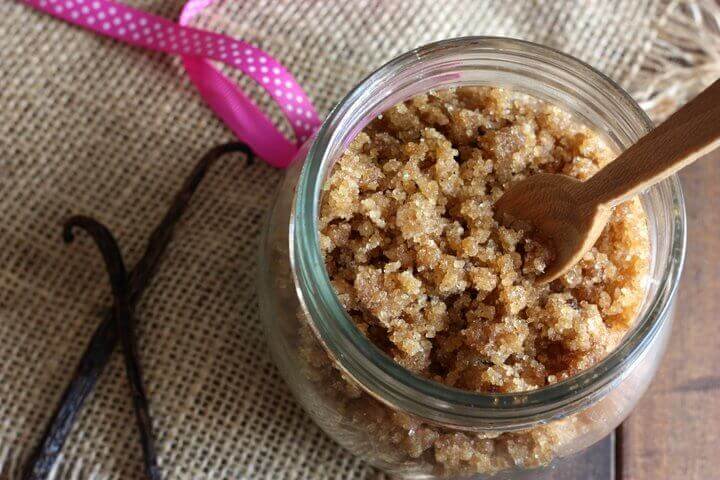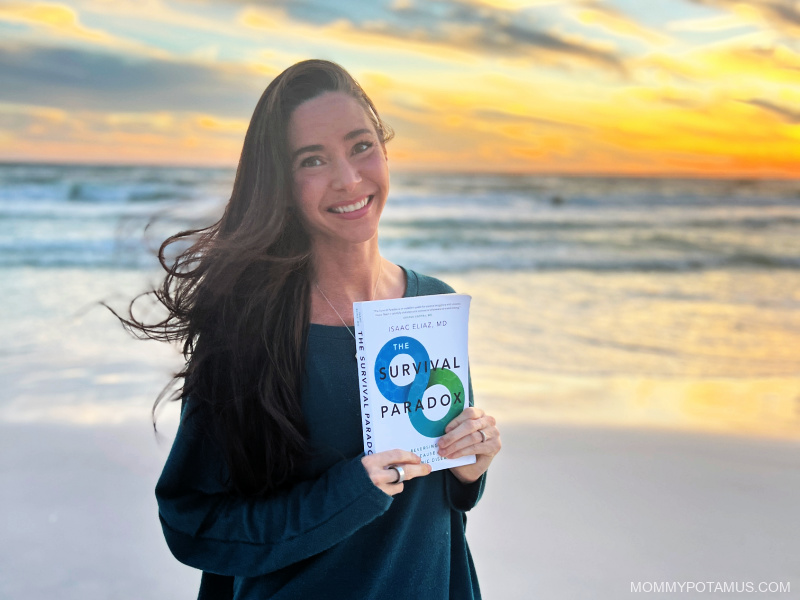
What if a “survival molecule” that’s supposed to keep us alive is actually driving inflammation, contributing to the hardening of tissues and organs, and generally wreaking havoc on our bodies? And more importantly, what if we can neutralize it and restore our well-being?
That’s the message of Dr. Isaac Eliaz, MDs book, The Survival Paradox: Reversing the Hidden Cause of Aging and Chronic Disease.
Everyone should know about this molecule, which is why as soon as I read The Survival Paradox I sent copies to several people that I care about, and now I’m writing this article for you.
So what is this molecule created by our bodies, what causes it to go rogue, and how can we restore balance and activate our innate healing potential?
We’ll dive into all that below, but first I want to remind you that none of these statements have been evaluated by the FDA, this article is not medical advice, and it’s not meant to prevent, diagnose or treat any condition. If you have a question about whether any wellness practice is right for you, please talk with a qualified healthcare professional.
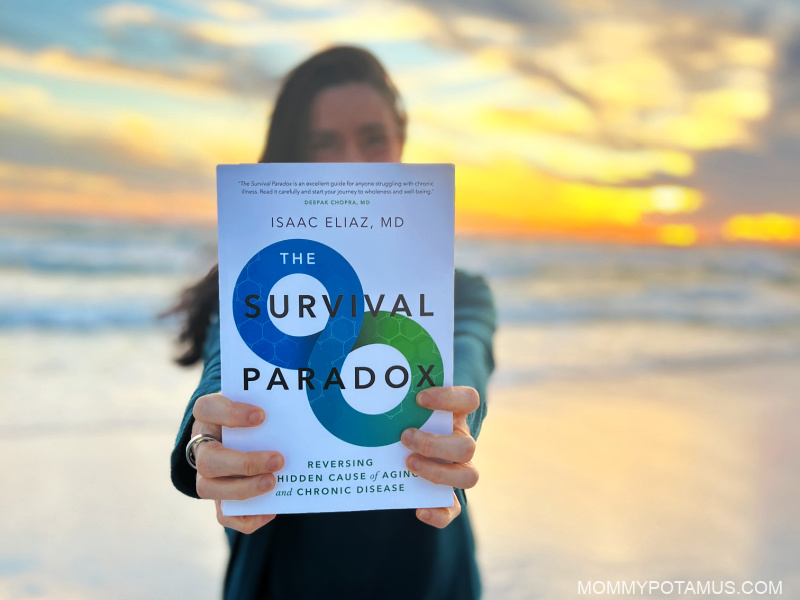
Meet Galectin-3: Your Survival Molecule
If you’ve never heard of galectin-3, or gal-3 for short, you’re not alone. Even though there are thousands of studies the document its impact on inflammation, immune function and so much more, most healthcare practitioners haven’t heard of it either. (1)
Dr. Eliaz is working to change that, though. As an integrative medicine physician, acupuncturist, formulator, clinician, and founder of the Amitabha Medical & Healing Center in Santa Rosa, California, he’s dedicated his career to understanding and resolving complex conditions.
At the heart of his work is galectin-3, which he describes as the architect of your body’s survival response. Galectin-3 is a carbohydrate-binding protein that’s activated by illness, injury, emotional stress, physical stress – basically, any type of stress.
It’s job is to initiate a cascade of processes that are intended to facilitate your survival. One of the main mechanisms triggered is inflammation, which is a necessary part of the healing process in acute situations.
Unfortunately, modern life is full of stressors that activate our survival alarm system – EMF exposure, toxins in our food and drinking water, poor sleep, emotional stress, financial challenges, and more.
This daily barrage of stressors can create a counterproductive state in which our internal alarm is constantly being triggered and galectin-3 production goes haywire.
Or as Dr. Eliaz puts it:
In an attempt to survive a stressor, our survival response may cause more damage than the stressor itself.
This is the survival paradox.” (1)
How The Survival Paradox Works
Let’s say you have a list of things to do for the day – grocery shopping, laundry, paying a few bills, and meal prep, for example – when you get a call about an urgent problem. All of a sudden you drop everything to address the crisis, and by sunset you’ve got things under control.
BUT . . . you’re exhausted, you don’t have groceries, you’re out of clean clothes, bills still need to be paid, and everyone is eating scrambled eggs for dinner.
Now, most of us can handle the occasional life emergency without compromising long-term well-being, but the operative word is occasional. On a biological level, modern life is constantly tripping internal alarms that activate galectin-3. That’s a problem because:
Our bodies are not just trained to survive but to survive at any cost.” (1)
When our environment and the pace of our lives create a situation in which our survival responses never turn off, galectin-3 starts working against us. Or as Dr. Eliaz put it:
When galectin-3 activity continues uncontrollably, it effectively ‘goes rogue,’ driving inflammation and fibrosis rather than healing.” (1)
Little Molecule, Big Impact
Now, you may be thinking, “Okay, chronic inflammation and fibrosis don’t sound good, but what are we really talking about in terms of effects?”
According to clinical research, rogue galectin-3 activity can cause serious health impacts throughout the body. Excess levels play a role in immune system imbalance, organ problems, metabolic issues, neurological challenges, accelerated aging, poor tissue repair and more. (2) (3) (4) (5) (6) (7) (8) (9)
We’re not just talking about a few case reports, either – there are thousands of studies that document the massive impact of this one little molecule.
It makes sense when you consider that it can be made by our immune cells, epithelial cells that line tissues such as the intestines and lungs, endothelial cells that line blood vessels, sensory neurons and more, so it’s able to initiate (or overblow) the survival response from pretty much anywhere within minutes.
However, to fully understand how one little molecule could have such far reaching effects, there are a few other factors to consider:
When we’re constantly in survival mode, our bodies often forego important maintenance tasks that can resolve small issues before they become big ones.
Even worse, excess galectin-3 expression causes biological changes that trigger the release of more galectin-3, creating a closed-loop system that Dr. Eliaz calls our “single greatest threat” to longevity.
Also, it’s also a chimera protein, which as it turns out is a pretty big deal.
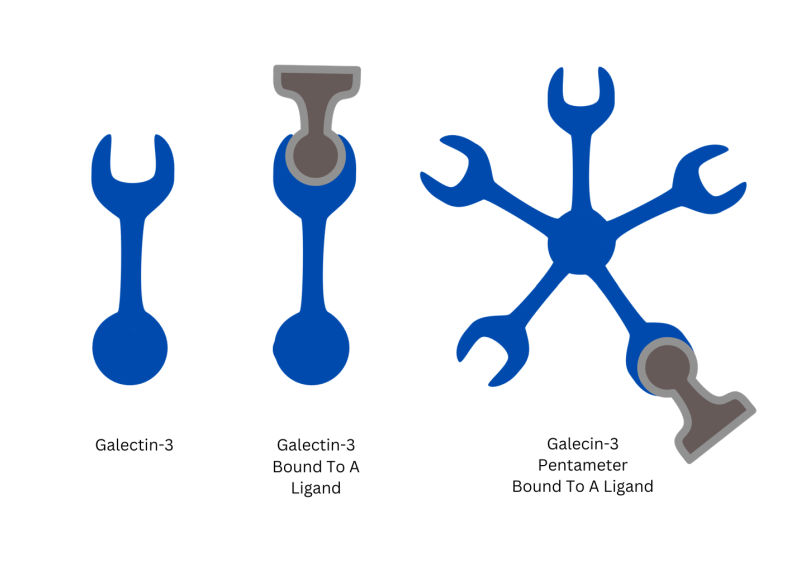
The Unique Structure of Galectin-3
A few years ago, my boys spent months building different structures out of their fort building kit – shelves, mazes, and occasionally an actual fort. It’s more versatile than I imagined . . . kind of like galectin-3.
Galectin-3 has a chimera structure, meaning that different structures from various sources come together to create it (a chimeric character you might be familiar with is Frankenstein: he was created from many different parts.) When galectin-3 is activated, it can bind to other galectin-3 proteins and other carbohydrates to form complex structures. Up to five individual galectin-3 proteins can stick together, creating five-sided structures called pentameters.” – The Survival Paradox
Due to its unique ability to bind with itself, other carbohydrates, and cell-surface receptors, galectin-3 can create lattice formations around “areas of damage, infection, and toxic build-up, among others.” (1)
While in some circumstances this can be beneficial – say, to isolate a threat like heavy metals – it can also be used against us.
That’s because pathogens like bacteria, viruses, fungi and parasites – plus abnormally functioning cells – “have a similar isolation strategy. They can hijack galectin-3 to create a shield around themselves (a lattice formation) so they are undetected by the immune system and can even evade therapeutic agents.” (1)
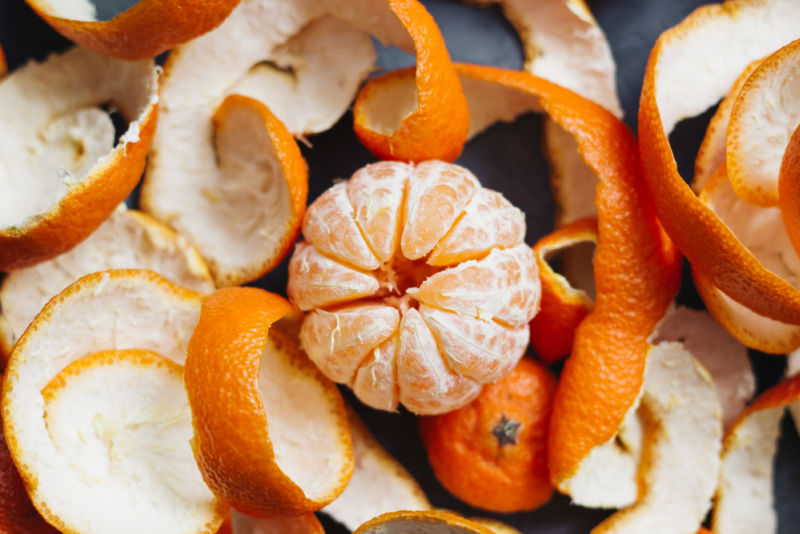
Unlocking Healing Potential
Fortunately, “we can absolutely interrupt this cycle of destruction” using modified citrus pectin (MCP). (1) It’s made from the peels of oranges, lemons and limes, and i works by sticking to galectin-3’s receptor sites so they can’t bind with anything else.
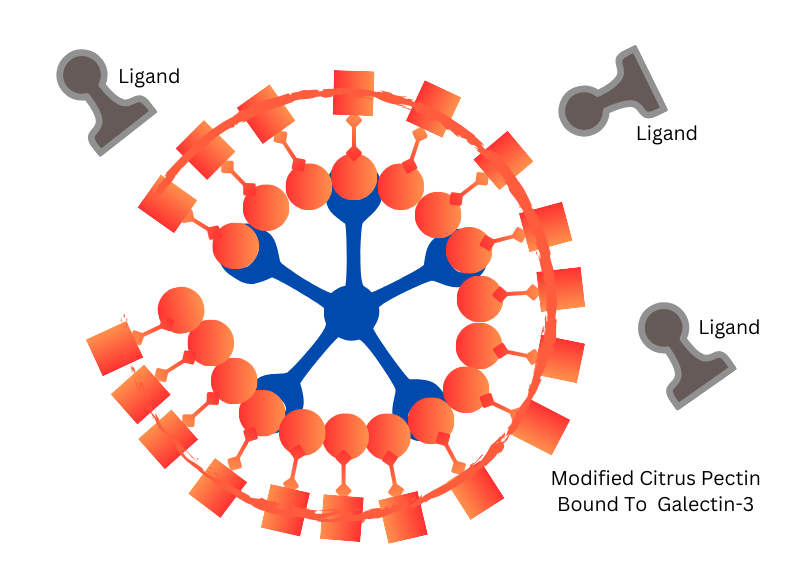
And here’s the best part: It deactivates excess galectin-3 while leaving beneficial galectin-3 intact.
While MCP blocks galectin-3 in places where it causes damage, tissues that require galectin-3 still express galectin-3 where it’s needed. This is the wonderful thing about MCP: it doesn’t inhibit healthy cellular function and injury repair but rather mitigates the harmful consequences of galectin-3.” (1)
In other words, neutralizing excess galectin-3 allows our survival molecule to work for us instead of against us. Or as Dr. Eliaz writes:
The body has an innate capacity to heal itself—when the survival response doesn’t stand in its way.” (1)
2 Bonus Benefits of Modified Citrus Pectin (MCP)
In addition to neutralizing excess galectin-3, MCP also:
Supports heavy metal detoxification – Several small studies have found that MCP positively influences the detoxification of lead, mercury, arsenic and cadmium without disrupting essential minerals. (10) (11) (12)
Nourishes Gut Health – MCP also contains a pectic oligosaccharide prebiotic fiber that provides “nourishment and fuel for establishing healthy microbial populations in the large intestines.” (13)
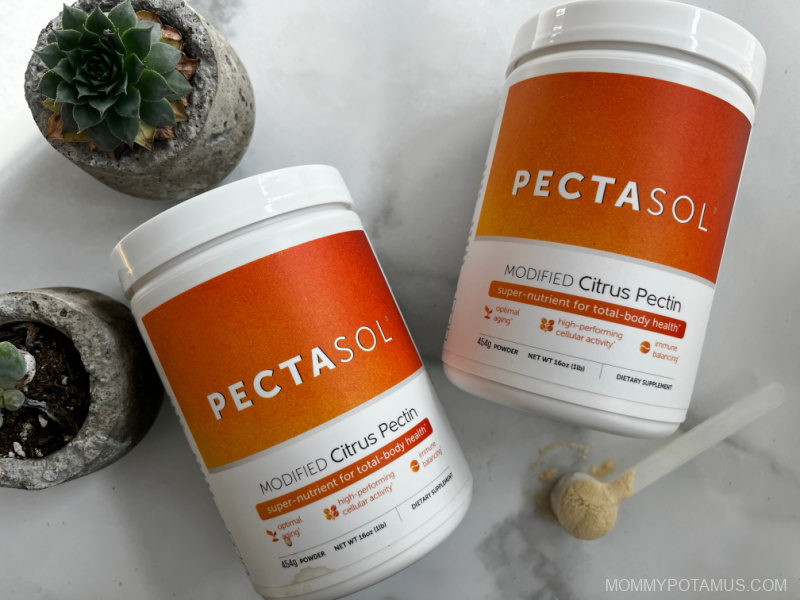
How To Choose The Best Modified Citrus Pectin
With over a thousand research papers and counting, awareness of galectin-3 is growing . . . and with it, so are the number of companies offering modified citrus pectin.
Unfortunately, there are forms of MCP on the supplement market that are just too large to pass through the digestive tract into the bloodstream – and , depending on how they’re extracted, they may also contain unwanted solvent residues.
That’s why Dr. Eliaz created a form for use in his own clinic, PectaSol.
Using a heat-controlled enzymatic process, the long chain molecules of regular citrus pectin are broken down into tiny molecules – a form called low-molecular weight MCP. The result is a pure, highly potent powder that has been extensively used in clinical research.
In fact, 80+ peer reviewed studies on the benefits of modified citrus pectin use PectaSol.
I use the plain powder – which is available through Dr. Eliaz’s supplement company, ecoNugenics – about 30 minutes before breakfast atnd dinner. It can be a little clumpy when stirred into cool liquids, so I either warm up my water or give it a quick whir with a little handheld frother.
If you prefer capsules or chewables, those are available, too.
More Ways To Reduce Galectin-3
Of course, another way to reduce galectin-3 levels to prevent excess levels from forming in the first place. Modern life can make that challenging, but there are ways to increase our resilience to stress so that the survival alarm is triggered less often.
For example, in one study, patients who meditated for 60 days experienced significant reduction on galectin-3 levels compared to their baseline. (14) This mind-body approach is at the heart of Dr. Eliaz’s book, which is a must-read if you want to better understand galectin-3’s role in some of the most challenging conditions.
It’s full of insightful and inspiring patient stories, challenge-specific guidance, and, most importantly, a heart-centered approach that is so incredibly refreshing (and motivating). Click here to pick up your copy.
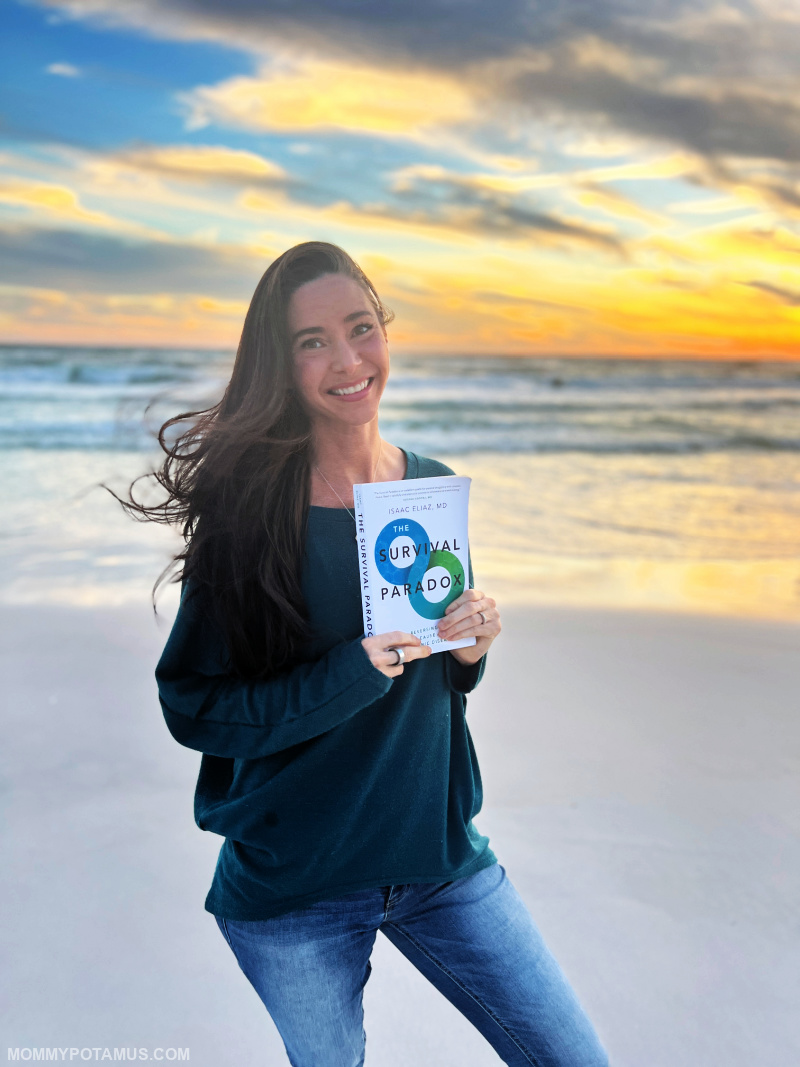
Sources
- Eliaz, Isaac (2021) The Survival Paradox
- de Oliveira, Felipe L et. al. (2015) Galectin-3 in autoimmunity and autoimmune diseases
- Lima, Tânia et. al. (2022) Galectin-3 in prostate cancer and heart diseases: a biomarker for these two frightening pathologies?
- Li , Ying-Shuang et. al. (2020) Roles of galectin-3 in metabolic disorders and tumor cell metabolism
- Li, Yanhua et. al. (2022) Emerging roles of Galectin-3 in diabetes and diabetes complications: A snapshot
- Soares, Luana C. et. al. (2021) Novel Galectin-3 Roles in Neurogenesis, Inflammation and Neurological Diseases
- Xue, Sara et. al. (2023) Elevated Galectin-3 Is Associated with Aging, Multiple Sclerosis, and Oxidized Phosphatidylcholine-Induced Neurodegeneration
- Barake F et. al. (2020) Galectins in the brain: advances in neuroinflammation, neuroprotection and therapeutic opportunities
- Vlachou, Fani et. al. (2022) Galectin-3 interferes with tissue repair and promotes cardiac dysfunction and comorbidities in a genetic heart failure model
- Zhao, Zheng Yan et al. (2008) The role of modified citrus pectin as an effective chelator of lead in children hospitalized with toxic lead levels
- Eliaz Isaac et. al. (2006) The effect of modified citrus pectin on urinary excretion of toxic elements
- Eliaz, Isaac et. al. Integrative medicine and the role of modified citrus pectin/alginates in heavy metal chelation and detoxification – five case reports
- Eliaz, Isaac (2020) The Failure of Probiotics—and the Strategy of Microbiome Synergy
- Lin, Carlo Dal (2017) Thoughts modulate the expression of inflammatory genes and may improve the coronary blood flow in patients after a myocardial infarction


